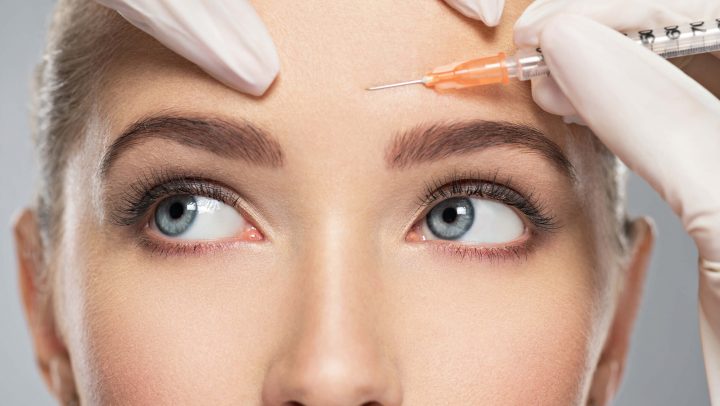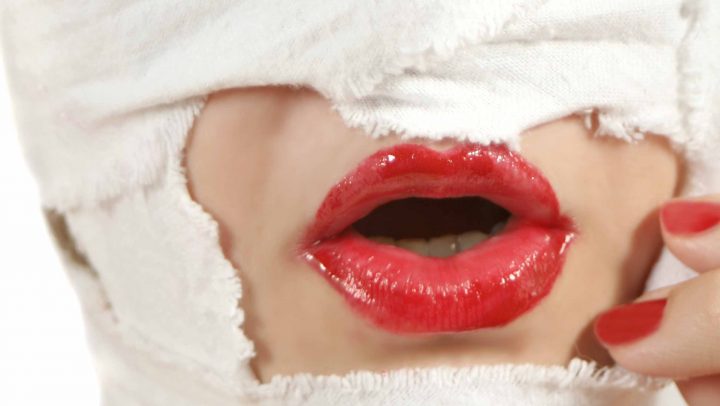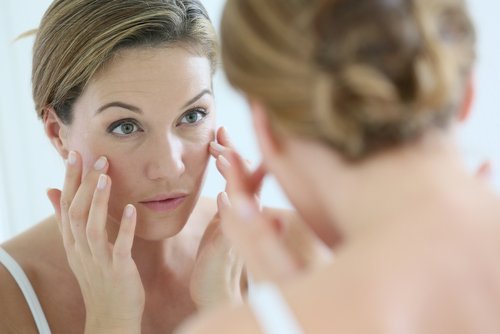


5 Myths About “Lunchtime” Plastic Surgery
Myth #1 - You Heal as Quickly as the Procedure
While it may sound convenient and desirable to get a quick filler for your upper lip, the results (and resulting problems) are another reality completely. In one patient’s case, the material they used was hastily chosen and all wrong for her face. The swelling didn’t go away, even a week later… then she was told to wait six months… then five years passed and she is still dissatisfied with the bump in her lip. Choosing your filler is a delicate and exacting process. By rushing into a procedure, you risk complications, pain, or worse. That’s why a reputable and trusted physician will weigh your options with you well before you plump those lips.Myth #2 - Fast Equals Cheap
The notion that you can pop in for a quickie facelift and only pay by the hour is foolhardy on so many levels. First, you should never rush when it comes to your health. And second, true health care providers shouldn’t punch a clock and charge by the minute. Finally, just because it’s fast, that doesn’t mean it’s cheap. A so-called “lunchtime” facial procedure can still cost upwards of two thousand dollars, and since it’s performed so hastily, it will most definitely require follow up visits and special attention in the long run.Myth #3 - I’ll Just Do It This One Time…
While Botox has been proven to be safe and effective if administered responsibly, there is a new theory that excessive and repeated sessions could do more harm than good. The rise of “fast” plastic surgery is now dovetailing with the preponderance of addictive behavior among patients who schedule multiple Botox sessions in quick succession. An estimated 40% of these lunchtime procedure enthusiasts are undergoing injections too frequently, according to health experts.Myth #4 - It’s as Effective as the Real Thing
A procedure as delicate and involved as a breast augmentation requires extensive consultation and consideration. However, some disreputable surgeons are promoting their hasty methods for the lunchtime crowd these days. It is inconceivable to think that you could recover from such an invasive process in less than two hours. Also, the actual technique required for a successful breast surgery doesn’t work in a truncated time frame. When done in a rush, surgeons can only apply the implant to the front of the breast, on top of your existing muscle. This won’t sit correctly, causing unsightly wrinkles and puckering where the implant meets your tissue. To be done properly, an implant must go beneath the muscle, which requires more time on the operating table. The experience may take longer, but the results are preferable in every way. In addition to the aforementioned aesthetics of a thorough intramuscular technique, the implant is also more protected when it is tucked within your existing tissue.Myth #5 - Plastic Surgery Has Become Completely Standardized
While it’s true that medical science has progressed rapidly over the past two centuries, that doesn’t mean that it is now a “one size fits all” endeavor. Your body, face, and general physiology are unique. You have individual needs and specialized goals for who you are and how you want to look. If a doctor tells you that cosmetic surgery has become “standardized” or in some way uniform, then you need to visit another doctor. For a consultation as special as you are, schedule an appointment with Dr. Binder. He is ready to listen to your questions, and he’ll take the time to explain his answers… even if that lasts more than just a lunch hour.
Surprising Applications of Botox
ADDITIONAL COSMETIC APPLICATIONS
Botox immobilizes certain muscles that lead to age lines in the brow, but this functionality can also help reverse several other facial abnormalities.- Cleft Lips – Over 4,000 babies are born with cleft palates and/or lips annually. By introducing Botox to the affected area, doctors can alleviate the scarring process by allowing the afflicted muscles to heal.
- Facial Tics – Similarly, a small dose of Botox can reduce the facial spasms that lead to nervous ticks, delivering relief to its recipient.
- Crossed Eyes – The FDA has also approved Botox to help the approximately 4% of Americans who suffer from a condition called Strabismus or crossed eyes. The injection helps relax the surrounding tissue so the eyes can properly line up without stressing the muscles.
- Jaw and Lip Musculature – A strong jaw can have its benefits, but it may result in a silhouette that looks bulky and misshapen. By injecting these muscles with Botox, you can relax the face and slim down the profile. Also, injections into a “short lip” can help relax it and cover up what is perceived to be a “gummy smile”.
NO PAIN, YOUR GAIN
If you are experiencing chronic pain, be sure to consult a medical professional right away. You may be surprised at his/her diagnosis: Botox. This serum was discovered to be an effective treatment for migraine headaches all the way back in 1992 by a pioneer named Dr. William Binder. It took the FDA almost two decades to catch up, but they finally approved the use of Botox to alleviate migraines in 2010. The procedure involves approximately 30 injections around the head and neck and its benefits last for up to three months. But headaches aren’t the only pains that can be treated with Botox. Lower back spasms may be reduced with these injections, as can mogigraphia, commonly known as writer’s cramp. The repetitive use of the hand and forearm creates tension in the muscles, but Botox can relax this region and bring relief to the suffering scribe. Botox is also useful to patients suffering from coldness or tremors in their extremities. Patients could use the injections to counteract their painful esophagus spasms during the process of digestion.PROFUSE SWEATING
One unexpected by-product of Botox injections is the reduction in perspiration. When doctors began noticing this trend, they started treating patients with severe primary axillary hyperhidrosis, aka profuse underarm sweat, with the aforementioned serum.BLADDER CONTROL
For people suffering from OAB (overactive bladder), Botox presents a source of relief. A series of targeted injections can relax the spasms of the bladder, providing a treatment for incontinence, especially in patients recovering from spinal cord damage.PARKINSON’S AND A.L.S.
Neurodegenerative disorders such as Parkinson’s disease and Amyotrophic Lateral Sclerosis (A.L.S., also commonly referred to as Lou Gehrig’s disease) sometimes trigger excessive drooling by those afflicted. Botox can help curb the salivation process and help restore the patient’s facial control temporarily.ANAL FISSURES
When the human sphincter spasms excessively, it can overexert the tissue of the rectum. This often leads to anal fissures: painful tearing of the internal rectal walls. Traditional treatment of anal fissures involves nitroglycerin ointment or surgery, but Botox presents a less invasive (and often more effective) third option. By relaxing the sphincter, the fissures are allowed to heal organically.HEART RATE
One possible future application of Botox injections could be seen in the realm of heart surgery outpatient programs. After enduring an open-heart procedure, some patients suffer from atrial fibrillation or an abnormal heartbeat. Botox could help regulate these palpitations when the heart is at its most vulnerable, giving the subject a much-needed boost on the road to recovery.SEXUAL DYSFUNCTION
Another experimental use of Botox involves the treatment of premature ejaculation. By injecting the penis, the surrounding tissue relaxes and delays the subject’s urge to climax. The same material could also aid in female patients who suffer from pain during intercourse. Botox can reduce the spasms in a woman’s pelvic floor, which can lead to discomfort when overactive and/or pronounced.EMOTIONAL BENEFITS
There is a burgeoning theory in some medical circles called the facial feedback hypothesis. This is the idea that Botox can make a patient look happier, which in turn can actually make them feel happier. It’s impossible to accurately quantify joy or sadness, but we have been trying for millennia. That’s why such clichés as “mind over matter” and “put on a happy face” have endured for so long. Perhaps there is some validity to the psychological benefits of using Botox to battle depression, but the statistical data is still inconclusive. For more information on the benefits of Botox, consult a true maverick in the field: Dr. William Binder. His friendly and helpful staff can schedule a consultation to discuss your specific needs and guide you forward in your quest for a healthier, happier you.
What’s an appropriate age to consider cosmetic procedures?
- Nose size and proportion in relation to facial harmony
- Nose width at the bridge, or a profile with visible bumps on the bridge
- The size, shape, and position of the nostrils
- A nasal tip that is bulbous, drooping, upturned, or hooked
- Nasal asymmetry
The Rise in Teenage Cosmetic Surgery
With the advent of social media, young people are more conscious than ever of how they look. With every tweet, share, and like, teenagers are comparing their features with influencers, celebrities, and classmates. While we must maintain a realistic and healthy outlook for our friends in Generation Z, it is inevitable for them to be curious about their options in the realm of cosmetic procedures. In the year 2017, approximately 230,000 patients from the age of 13 to 19 received such procedures. This accounts for roughly four percent of the total number of people who explored the world of cosmetic reconstruction. On top of these surgical procedures, teens racked up another 160,000 non-invasive touch-ups, chief among them being Botox visits and laser hair removal appointments. With the influx of new patients comes an increased sense of caution. Teens must be well counseled before embarking upon any sort of cosmetic procedure to make sure they are doing so for the right reasons. In addition to the aforementioned guideline of 16 being the recommended minimum age for rhinoplasty, experts have agreed upon the following- Breast augmentations or reductions: 18 years and older
- Liposuction procedures: 18 years and older
- Otoplasty (ear alteration surgery): 5-7 years old
- Retin A: 16-18 years of age
- Lasers for acne scar removal: 16-18 years old
- Other laser procedures: 18 years and older
- Chemical peels: 18 years +
- Botox and other filler injections: 18 years and older
The Benefits of Cosmetic Procedures for All Ages
While the age restrictions above are vitally important to consider, there are also a myriad of benefits that facial procedures can elicit. According to a recent study of approximately 550 patients, the majority of those who underwent their desired cosmetic alteration reported blockbuster results. Self-esteem skyrocketed in this sample group, as did feelings of joy and general satisfaction in life. As anyone who has endured adolescence can attest, it is a volatile period, characterized by self-doubt and insecurity. While teenagers shouldn’t rush into cosmetic procedures to counteract these forces, it can’t be overstated that looking good often leads to feeling good. Consult a trusted physician and don’t be afraid to discuss any and all psychological stresses and emotional issues you may be feeling. We can all work together to make sure that you grow up to be the best you possible. About Dr. William J. Binder Dr. William J. Binder is a facial plastic surgery specialist with over three decades of experience with facial plastic surgery. For almost three decades, his individualized philosophy and approach to facial plastic surgery has led him to pioneer new techniques for facial surgery procedures and earned him international acclaim for his results. If you want your facial plastic surgery performed by one of the world’s leading cosmetic surgeons, contact Dr. Binder’s office today to schedule an initial consultation.
History of Facial Rejuvenation

How Much Does Facial Plastic Surgery Cost?
- Each with their own pros and cons,
- Each more or less invasive and prone to complications for a given patient,
- Each with different requirements for anesthesia,
- Each with their own typical recovery times,
- And each with varying limits on the extent of the results that can be achieved.
The High Cost of Impatience
As the old saying goes, haste makes waste - and it can also be costly. When patients require a second or even third visit to the surgeon, each of these revisions could cost as much as the initial operation. That’s why it’s important to be diligent with your research before undergoing any procedure. Communicate your concerns and questions to your doctor. If he or she doesn’t respond to your satisfaction, then it’s time to ask for a second opinion. Medical professionals must be just that: professional. They should never rush you into a procedure for which you are not ready. The ramifications can be dangerous and pricey. Take, for example, breast augmentation surgery. Last year, the cost of this operation averaged $3,718. Now consider the fact that somewhere between 20 and 40 percent of all breast augmentation patients sought additional surgeries within eight to ten years of their first procedure. This leads to soaring healthcare costs, not to mention the discomfort and inconvenience of repeated recuperation times. In addition to the price of the actual operations, you must also factor in lost salary from work as you take time to heal, not to mention the consultations and residual medical costs involved with each follow-up visit. Caution is advised for any cosmetic procedure, not just the one detailed above. Rhinoplasty, for example, is a delicate operation that requires an equally delicate touch. Of course, you want a skilled doctor in the O.R., but you also want that exacting attention to detail long before the date of your procedure. Planning ahead is essential, and your physician should map out your unique facial structure before formulating any plans when it comes to reconstruction. Your cartilage is as individualized as your bone structure. Some people have thick, sturdy reserves of cartilage that is more difficult to reshape. Others have thinner nasal shapes that are extremely vulnerable to change and must be treated as such. Also, once the cartilage has been reconstructed, your skin must be assessed for its elasticity. Will it conform to your new face? How conducive will it be to breathing and general functionality? Are your cosmetic goals attainable given the parameters of your cartilage and skin, as detailed above? If not, how can you and your doctor work together to re-imagine your plans and move forward safely and effectively? It’s important to answer these questions before the day of your procedure to avoid the need for a repeat visit. After all, the average rhinoplasty costs somewhere in the vicinity of $5,125 according to recent studies. That’s a price tag you only want to encounter once, so let’s work together to get it done right the first time. When it comes to facial surgery, the most important consideration is safety and the quality of the results you will achieve. USA Today personal finance correspondent Regina Lewis has sound advice to offer regarding the costs of cosmetic surgery. “Don’t cut quality corners,” she said. “Regardless of the procedure you’re interested in, always look for a top board-certified surgeon. Certification standards can vary.” Lewis outlined the following questions to consider when choosing a surgeon:- What is the doctor board-certified in?
- Is the doctor licensed? Are there any state disciplinary actions?
- How often has the doctor performed the surgery you are considering?
- Is the facility where the surgery taking place accredited?
About Dr. William J. Binder
Dr. William J. Binder is a facial plastic surgery specialist with over three decades of experience with facial plastic surgery. For almost three decades, his individualized philosophy and approach to facial plastic surgery has led him to pioneer new techniques for facial surgery procedures and earned him international acclaim for his results. If you want your facial plastic surgery performed by one of the world’s leading cosmetic surgeons, contact Dr. Binder’s office today to schedule an initial consultation.
7 Signs of a Successful Rhinoplasty
- Symmetry
- Breathing
- No Scars
- No Need for Revision
- Natural Look
- Facial Harmony
- Patient Satisfaction
How 3-D Imaging is Innovating Modern Medicine
 3-D imaging via medical diagnostic tools such as MRIs and CT scanning is completely revolutionizing modern medicine.
As these medical devices become increasingly more precise at an accelerating rate, they are providing doctors with more finely-detailed, high resolution 3-D imaging of their patients with each passing year.
At the same time as the rapid increase in the sensitivity and resolution of these modern imaging devices, the processing power of digital computation has continued its exponential growth in price-performance year over year, allowing physicians to render and analyze the data from 3-D imaging all the more effectively.
Innovations in 3-D Imaging Resolution
By contrast to the incremental improvements of medical techniques over the centuries, and even to radiography during the decades of the 20th century, in recent years the improvements to medical imaging are coming fast and making a difference by orders of magnitude.
A little over a year ago researchers at MIT announced they had developed an algorithm that exploits light polarization to boost the depth resolution of conventional 3-D imaging technology by 1,000 times.
Researchers say the technique is so promising that it could bring this technology to your pocket: “The technique could lead to high-quality 3-D cameras built into cellphones, and perhaps to the ability to snap a photo of an object and then use a 3-D printer to produce a replica.”
3-D Image Processing Speed
A high resolution imaging device has little useful application without the processing speed to match it. Processing power is essential to creating the images and manipulating the data in quality diagnostic scans made by imaging devices.
And it’s not only the rapid pace of improvement in the brute force of computer processing power that’s been essential to 3-D imaging innovation in recent years. It’s the implementation of software solutions that can use that power to effectively reconstruct volumetric data.
There’s also the configuration of hardware processing power in a way that’s effective and efficient for the kind of computation involved in 3-D imaging, such as the incorporation of GPUs (graphical processing units) like those used by gaming software to create better images faster than CPUs can.
Machine Learning and Modern 3-D Imaging
One innovator in the field, Mountain View, Calif.-based EchoPixel is helping surgeons take the guesswork out of surgical planning by allowing them to create a 3-D image from patient-imaging data and manipulate it in a virtual environment— to remove tumors, dissect tissues, or measure blood vessels. The technology is allowing physicians to get a more accurate view of their patients’ anatomy.
Furthermore, with the application of machine learning, the software records the clinician’s interactions with the 3-D imaging data, so other doctors can learn from the same steps and methodology. The software is compatible for use on different hardware devices, including wearable tech such as Google Glass, so it can be used in an operating room.
How 3-D Imaging is Saving Lives
An ounce of prevention: Along with life-saving advancements to surgery prep for critical surgeries that doctors perform on vital tissues and organs, 3-D imaging is saving lives in the critical field of medical diagnostics.
The use of modern computer 3-D images made from a composite of multiple 2-D radiographic images using tracers and contact dyes has allowed doctors to view a comprehensive image of a patient’s body and observe minor anomalies that would have otherwise gone undetected, providing vital early warning signs of potential health problems.
And Making Lives Better
With today’s level of sophistication in computer 3-D imaging technology, its use in medical practice has also found an ever-expanding role to play in helping doctors improve the quality and results of facial plastic and reconstructive surgery.
For patients seeking facial implants to improve the proportions or enhance the contours of their face, the computer era has made it possible for facial implants to be perfectly tailored to a patient’s face.
Custom implants made using 3-D imaging and computer-aided drafting look smoother, rounder, and anatomical, and allow facial reconstructive surgeons to correctly perceive the interaction of all facial features to create a balanced, well-proportioned face.
Dr. Binder was an early innovator in this field, noticing at first that facial implants of the time were not quite right, or as he would say: “non-anatomic.”
Pioneering Facial Contouring and 3-D Imaging
Before bringing the possibilities of high-resolution 3-D scanning, efficient digital rendering and imaging, and computer-aided drafting to fruition in facial reconstruction techniques, Dr. Binder did not see facial implants achieving the desired results he was striving to attain.
By innovating a system capable of fabricating custom-designed facial implants to a high degree of precision, Dr. Binder was able to pioneer a technique that allows the reconstruction of most facial contour defects with a higher degree of accuracy and better results than were ever before possible.
3-D imaging via medical diagnostic tools such as MRIs and CT scanning is completely revolutionizing modern medicine.
As these medical devices become increasingly more precise at an accelerating rate, they are providing doctors with more finely-detailed, high resolution 3-D imaging of their patients with each passing year.
At the same time as the rapid increase in the sensitivity and resolution of these modern imaging devices, the processing power of digital computation has continued its exponential growth in price-performance year over year, allowing physicians to render and analyze the data from 3-D imaging all the more effectively.
Innovations in 3-D Imaging Resolution
By contrast to the incremental improvements of medical techniques over the centuries, and even to radiography during the decades of the 20th century, in recent years the improvements to medical imaging are coming fast and making a difference by orders of magnitude.
A little over a year ago researchers at MIT announced they had developed an algorithm that exploits light polarization to boost the depth resolution of conventional 3-D imaging technology by 1,000 times.
Researchers say the technique is so promising that it could bring this technology to your pocket: “The technique could lead to high-quality 3-D cameras built into cellphones, and perhaps to the ability to snap a photo of an object and then use a 3-D printer to produce a replica.”
3-D Image Processing Speed
A high resolution imaging device has little useful application without the processing speed to match it. Processing power is essential to creating the images and manipulating the data in quality diagnostic scans made by imaging devices.
And it’s not only the rapid pace of improvement in the brute force of computer processing power that’s been essential to 3-D imaging innovation in recent years. It’s the implementation of software solutions that can use that power to effectively reconstruct volumetric data.
There’s also the configuration of hardware processing power in a way that’s effective and efficient for the kind of computation involved in 3-D imaging, such as the incorporation of GPUs (graphical processing units) like those used by gaming software to create better images faster than CPUs can.
Machine Learning and Modern 3-D Imaging
One innovator in the field, Mountain View, Calif.-based EchoPixel is helping surgeons take the guesswork out of surgical planning by allowing them to create a 3-D image from patient-imaging data and manipulate it in a virtual environment— to remove tumors, dissect tissues, or measure blood vessels. The technology is allowing physicians to get a more accurate view of their patients’ anatomy.
Furthermore, with the application of machine learning, the software records the clinician’s interactions with the 3-D imaging data, so other doctors can learn from the same steps and methodology. The software is compatible for use on different hardware devices, including wearable tech such as Google Glass, so it can be used in an operating room.
How 3-D Imaging is Saving Lives
An ounce of prevention: Along with life-saving advancements to surgery prep for critical surgeries that doctors perform on vital tissues and organs, 3-D imaging is saving lives in the critical field of medical diagnostics.
The use of modern computer 3-D images made from a composite of multiple 2-D radiographic images using tracers and contact dyes has allowed doctors to view a comprehensive image of a patient’s body and observe minor anomalies that would have otherwise gone undetected, providing vital early warning signs of potential health problems.
And Making Lives Better
With today’s level of sophistication in computer 3-D imaging technology, its use in medical practice has also found an ever-expanding role to play in helping doctors improve the quality and results of facial plastic and reconstructive surgery.
For patients seeking facial implants to improve the proportions or enhance the contours of their face, the computer era has made it possible for facial implants to be perfectly tailored to a patient’s face.
Custom implants made using 3-D imaging and computer-aided drafting look smoother, rounder, and anatomical, and allow facial reconstructive surgeons to correctly perceive the interaction of all facial features to create a balanced, well-proportioned face.
Dr. Binder was an early innovator in this field, noticing at first that facial implants of the time were not quite right, or as he would say: “non-anatomic.”
Pioneering Facial Contouring and 3-D Imaging
Before bringing the possibilities of high-resolution 3-D scanning, efficient digital rendering and imaging, and computer-aided drafting to fruition in facial reconstruction techniques, Dr. Binder did not see facial implants achieving the desired results he was striving to attain.
By innovating a system capable of fabricating custom-designed facial implants to a high degree of precision, Dr. Binder was able to pioneer a technique that allows the reconstruction of most facial contour defects with a higher degree of accuracy and better results than were ever before possible.
What’s the Difference Between a Migraine and a Headache
- Intense Nausea
- Severe pain behind one eye or ear
- Severe pain in the temples
- Seeing spots or flashing lights
- Sensitivity to light and/or sound
- Temporary vision loss
- Vomiting
- Acetaminophen
- Aspirin
- Ibuprofen
- Caffeine
- Alcohol
- Caffeine
- Aged Cheeses or other Aged Foods
- Stress
- Antinausea medicines, such as promethazine (Phenergan), chlorpromazine (Thorazine), or prochlorperazine (Compazine).
- Triptans, such as almotriptan (Axert), rizatriptan (Maxalt), or sumatriptan (Alsuma, Imitrex, and Zecuity).
